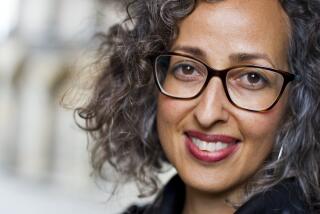MOHAMMED’S NIGHT JOURNEY
- Share via
In their review of Amos Elon’s “Jerusalem: City of Mirrors” (Book Review, Oct. 1), Roger Friedland and Richard Hecht essentially revise history by writing: “The Muslims claim the cleared platform of Solomon’s Temple as the launching pad for Mohammed’s night journey to heaven. In fact, the Koran does not mention Jerusalem by name and the city was probably identified with the sacred text’s ‘far distant mosque’ only a century later by Damascus-based Umayyad sultans to whom Mecca was denied.”
I won’t take offense at the snide tone of the words “launching pad,” but the next set of facts needs to be aligned with history. Many things not spelled out in detail, or by name, in the Koran were later expanded upon by the Prophet in his hadith , or “traditions,” recorded in his lifetime and selected as “canonical literature” through a strict verification process by early scholars. Jerusalem is mentioned by name in the most accepted hadith on the Night Journey: in the collection of Bukhari and Muslim. One piece of evidence for Mohammed’s journey, in fact, was that he was able to describe Jerusalem in detail to people who had visited it in broad daylight on their caravan journeys, while the Prophet had never visited it except during the journey.
Mohammed’s ability to describe the city convinced many skeptics that he had indeed been there, in whatever corporeal or non-corporeal mode one may wish to believe. So when the second Caliph (Omar), who was Caliph only two years after the death of the Prophet, came to Jerusalem himself, to find the spot he knew about through the Prophet’s account, he built what is described as a rude wooden mosque above the rock of the prophet Solomon, large enough, it is reported, to hold 3,000 people at a time.
Fifty-three years after the Prophet’s death, Caliph Abd al-Malik built the opulent mosque, the Dome of the Rock, over the first Omar’s mosque and established the golden dome that now stands above Solomon’s Temple stone, the present mosque almost identical to the original with the exception of exterior Persian tiles in place of the original mosaic work. This is the event mentioned in the Elon review, but the location long before had been identified by Muslims, as most historians--Muslim or not--know.
What is fretful in such an allegation is the possible sinister intent by the author of the book, and then by its subsequent reviewer. Israel and its supporters would like nothing more than to undermine any spiritual claims by Muslims, Arabs and Palestinians in particular, to the Mosque of the Rock as one of our three most revered spots on Earth. To simply say that it wasn’t even identified until a century after the Prophet’s death severely trivializes the Muslim’s love for Jerusalem as the place where our Prophet began the experience of one of his greatest miracles, the Night Journey, during which he received the form of the Prayer as we do it five times a day to this day. The intimations of inauthenticity regarding Judaism’s Tower of David and Christianity’s Via Dolorosa also may be erroneous and would also be reprehensible history, but I leave it up to experts of those two faiths to correct.
ABD AL-HAYY MOORE
SANTA BARBARA
More to Read
Sign up for our Book Club newsletter
Get the latest news, events and more from the Los Angeles Times Book Club, and help us get L.A. reading and talking.
You may occasionally receive promotional content from the Los Angeles Times.









